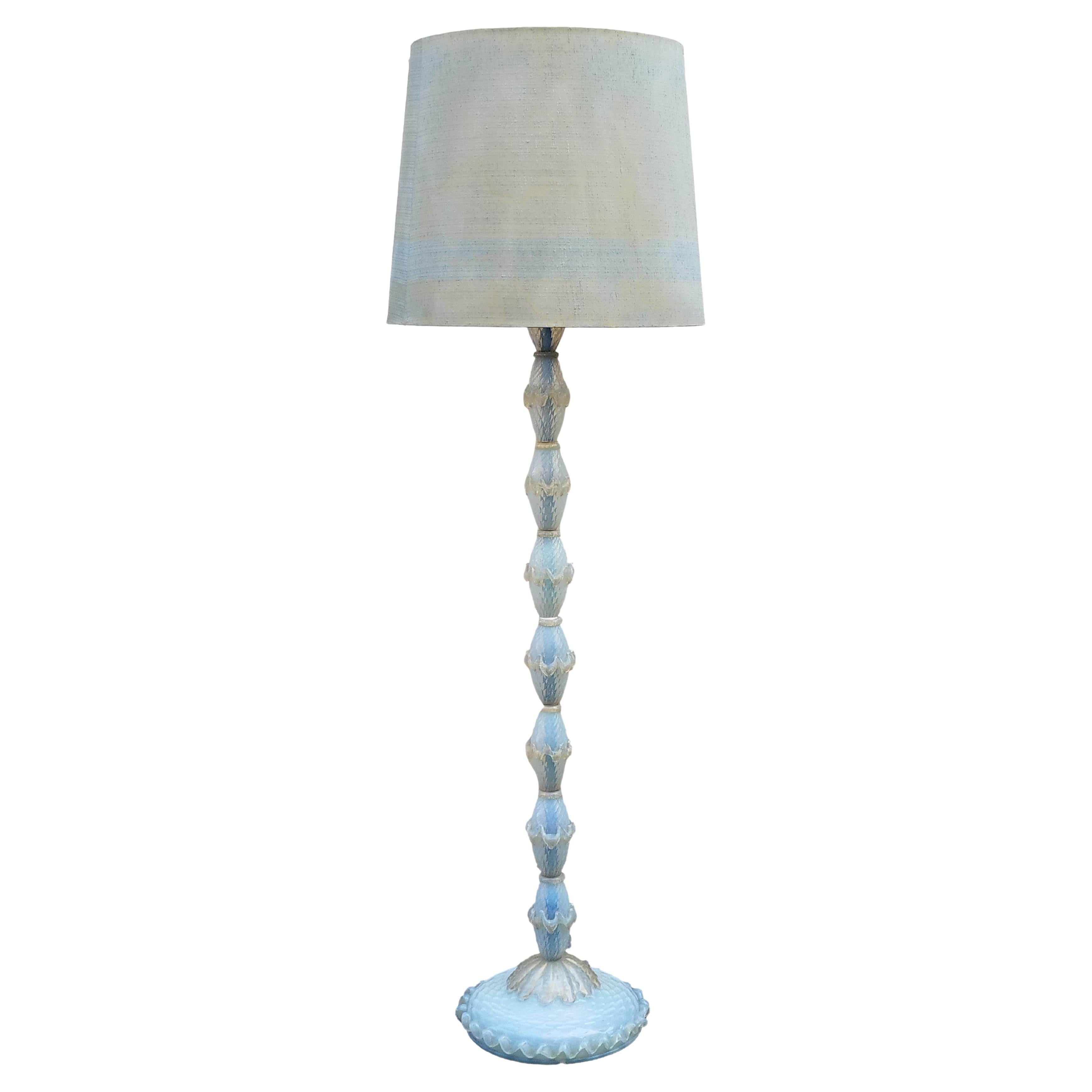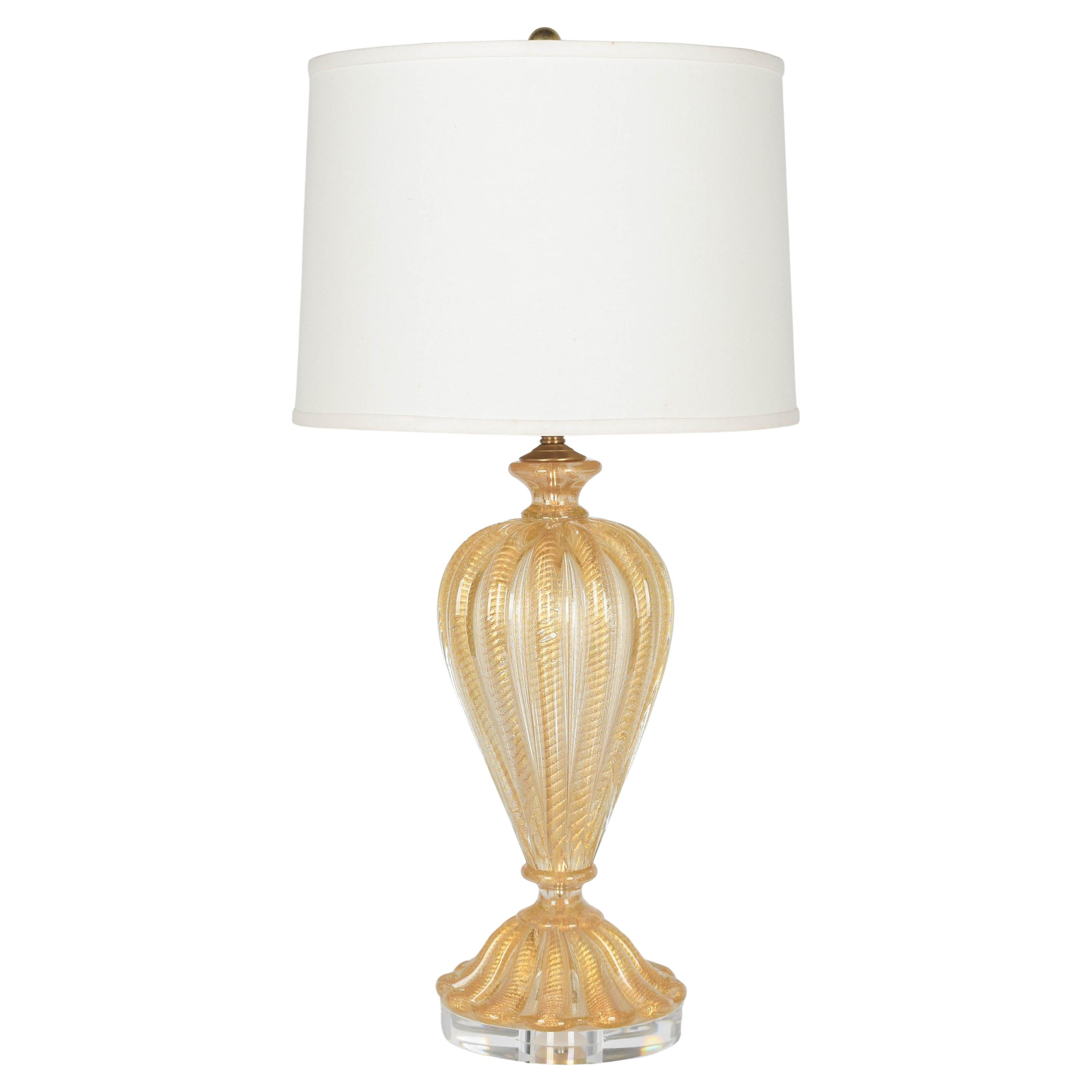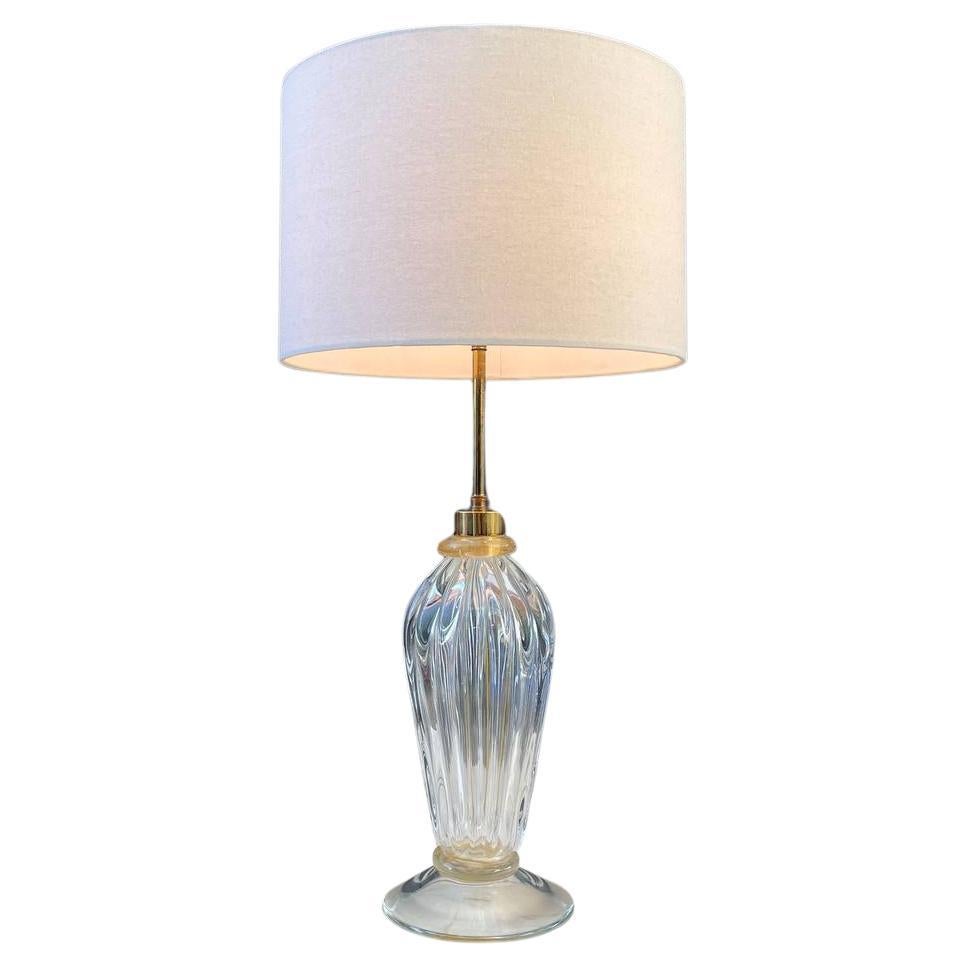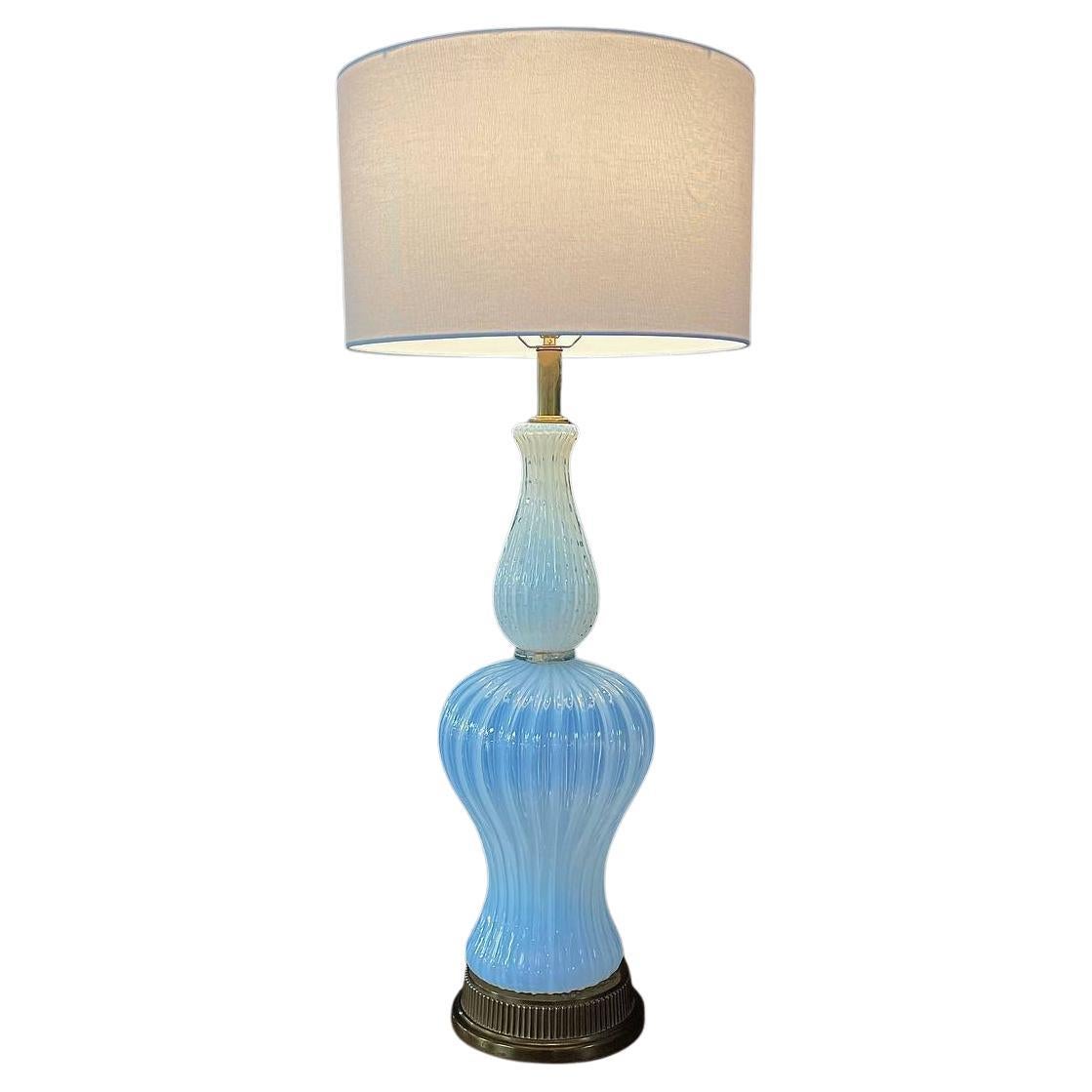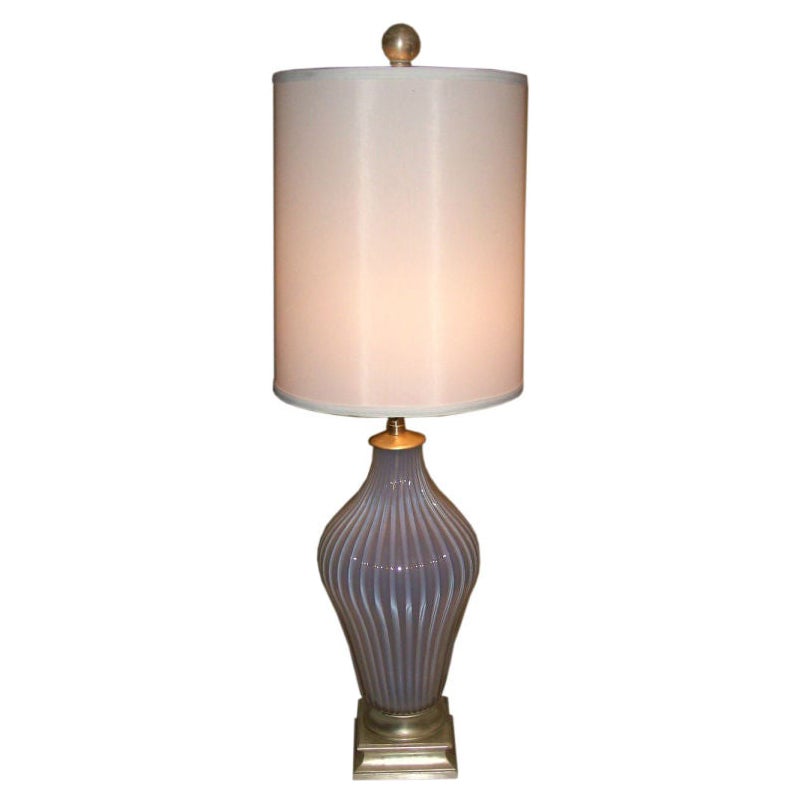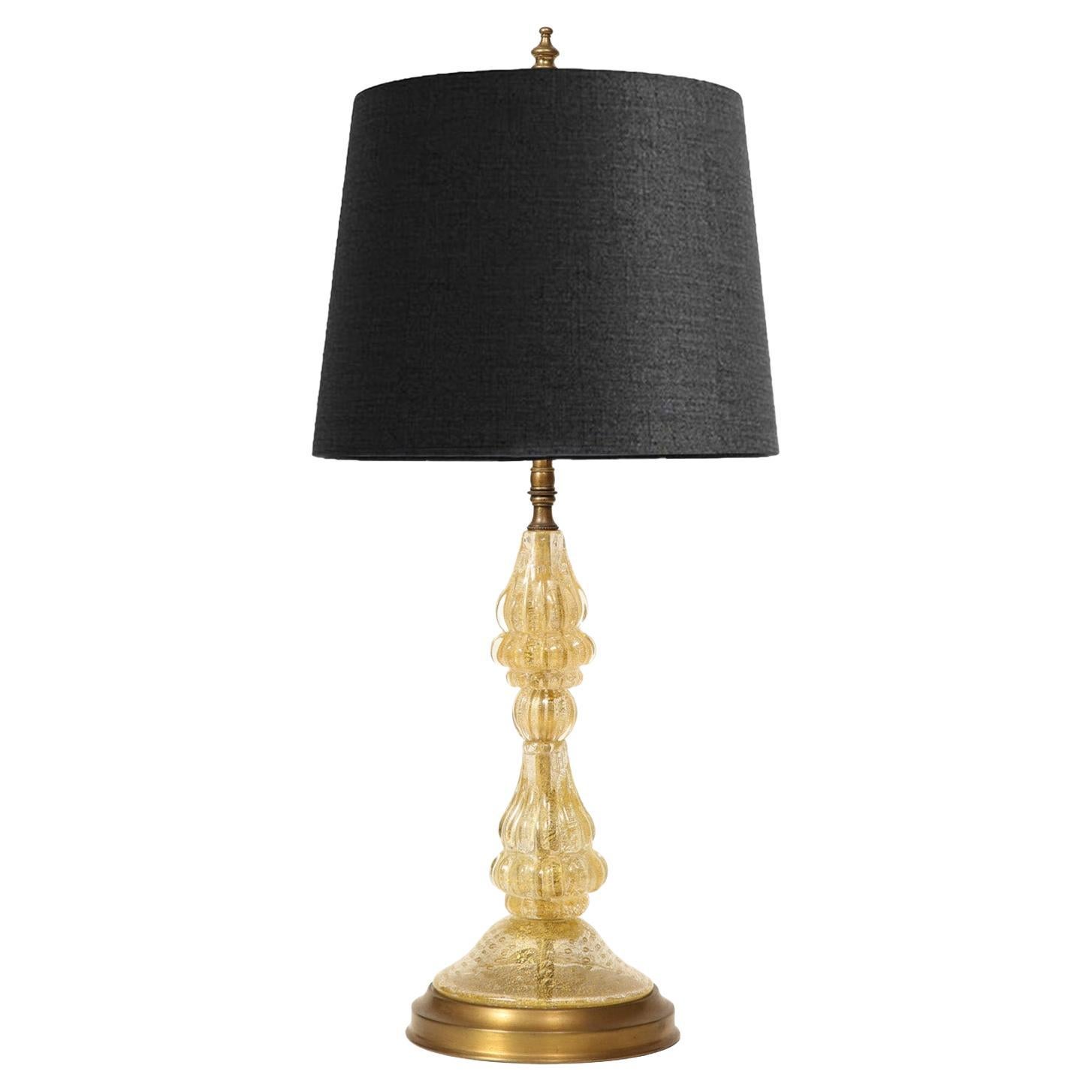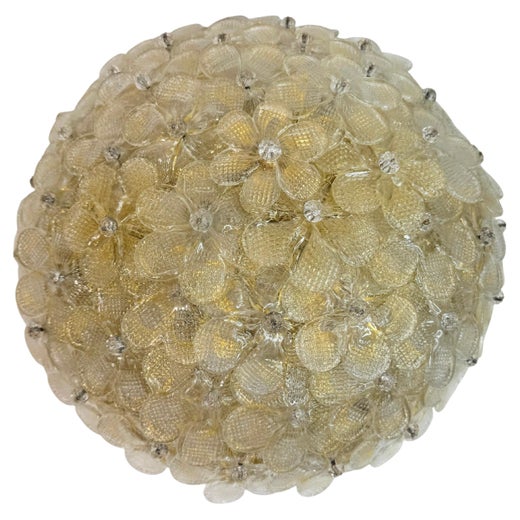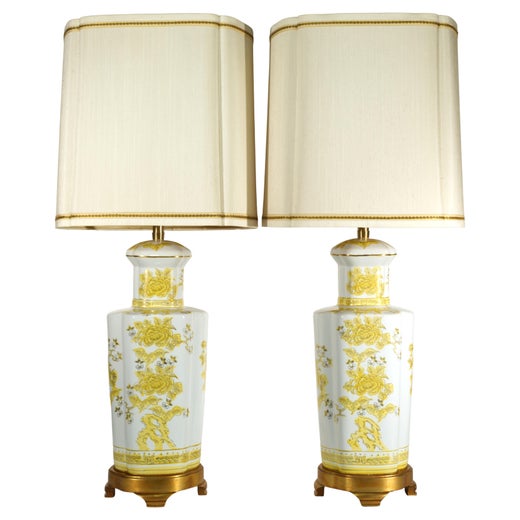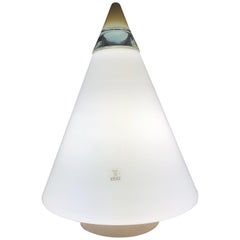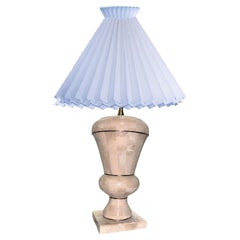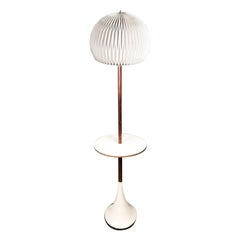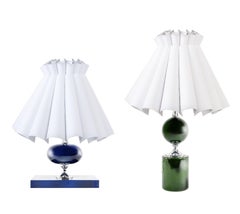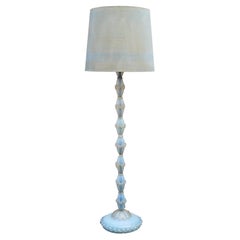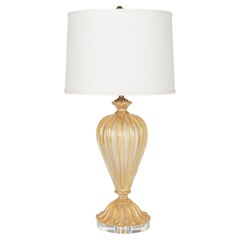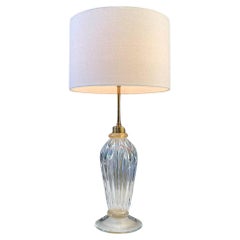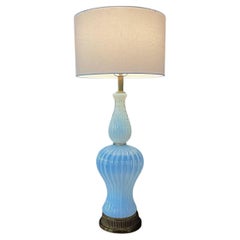Murano Opaline Caged Art Glass Monumental Table Floor Lamp Regency
About the Item
- Creator:The Marbro Lamp Company (Maker),Barovier&Toso (Maker)
- Dimensions:Height: 44 in (111.76 cm)Width: 14 in (35.56 cm)Depth: 14 in (35.56 cm)
- Style:Mid-Century Modern (Of the Period)
- Materials and Techniques:
- Place of Origin:
- Period:
- Date of Manufacture:1950s
- Condition:Minor losses. Loss to one side of upper ring.
- Seller Location:Brooklyn, NY
- Reference Number:1stDibs: LU4190315846501
Barovier&Toso
Partnerships come and go within the community of glass-making artisans on the Venetian island of Murano, where business relationships seem as complex as the shifting alliances in the notoriously acrimonious Italian parliament. Formed in 1942 by members of families with centuries of experience in the craft, Barovier&Toso has proven to be one of the most enduring and prosperous Italian glass manufactories of recent decades. Under the nearly 50-year artistic directorship of cofounder Ercole Barovier (1889–1974), the company created buoyant traditional pieces such as chandeliers, sconces and other lighting fixtures, and it pioneered an array of innovative modernist glass designs with bold colors, patterns and surfaces.
The Barovier dynasty began in 1295, when Jacobello Barovier, mentioned in historical documents as a master glassblower, began pinching, cutting, blowing and twisting a molten mixture of sand and minerals into incandescent works of art. It remained entirely family-owned until the mid-20th century, when it merged with another glassworks to become Barovier&Toso.
To appeal to gentler, more conservative tastes, Barovier&Toso produced a range of lilting, sinuous lighting pieces that are often described as embodying “Liberty Style” — the Italian term for Art Nouveau, taken from the name of famed London department store Liberty & Co., which promoted 19th-century organic textile designs and Arts and Crafts-style furniture in the manner of William Morris. The hallmarks of the style in Barovier&Toso works are elements of glass in the shape of thick leaves, fronds and flower petals, deployed along with other naturalistic ornament in sconces, pendants and chandeliers.
Ercole Barovier began his personal aesthetic transition toward modernism in the 1930s with his Primavera series of vases and animal sculptures — idiosyncratic milky-white and clear glass filled with tiny bubbles and hairline interior fissures that he produced for Artisti Barovier, a firm headed by his father and uncle. Later, with Barovier&Toso, he would explore such novel styles as the mosaic-like Pezzato glass; fluid Spiral patterns; the pebbly textured Barbarico line and the complex, layered and highly colored abstractions of the Oriente series of vases and bowls.
Traditional or modern, Barovier&Toso — still under family control — has produced one of the finest and most diverse catalogues of Murano glass in the last 100 years.
Find antique Barovier&Toso chandeliers, serveware, decorative objects and more on 1stDibs.
The Marbro Lamp Company
The Marbro Lamp Company was one of the finest lamp producers during the mid-1900s. Its pieces were mainly sold in a handful of exclusive furniture shops. Marbro was the go-to supplier of Hollywood Regency and mid-century modern style lighting for interior designers. Its table lamps, chandeliers, floor lamps and wall sconces have graced the homes of many celebrities.
Brothers Morris and Elliott Markoff founded the Marbro Lamp Company in 1934. Its name is a combination of “Markoff” and “brothers.” The brothers relocated from Chicago to southern California after the end of World War II and set up an assembly plant in the garment district of Los Angeles.
Vases and objets d’art, sourced from all over the world, were used as lamp bases. The brass bases came from India, alabaster from Italy, porcelain from Japan and China and crystal from Germany and France. Murano glass and whimsical bronze figurines were two of the more popular base materials.
Marbro lamps were one-of-a-kind and took between 75 and 90 days to complete. Occasionally, they were made from sculptures that customers brought into the factory. Highly skilled woodturners and shade-makers crafted lampshades and wooden bases in Marbro’s shop. Some metal and glass pieces went through paint or staining treatments. The company’s best-known products were these table lamps, but it also produced a wide variety of decorative objects.
The Masco Corporation acquired the Marbro Lamp Company in 1987. Its Los Angeles assembly plant shuttered its doors in 1990. Its equipment and remaining inventory were moved to LaBarge Mirrors — a Masco subsidiary — in Michigan. Shortly after, the production of Marbro lamps ended.
On 1stDibs, find vintage Marbro Lamp Company lighting, decorative objects and more.
- ShippingRetrieving quote...Shipping from: Brooklyn, NY
- Return Policy
More From This Seller
View AllLate 20th Century Italian Mid-Century Modern Table Lamps
Glass, Art Glass, Blown Glass, Milk Glass, Murano Glass
Late 20th Century Table Lamps
Stone, Brass
Mid-20th Century American Mid-Century Modern Floor Lamps
Fiberglass, Rosewood
Mid-20th Century French Mid-Century Modern Table Lamps
Brass
Mid-20th Century French Mid-Century Modern Table Lamps
Brass
Mid-20th Century Italian Mid-Century Modern Floor Lamps
Brass, Bronze
You May Also Like
Vintage 1940s Italian Mid-Century Modern Floor Lamps
Murano Glass
Vintage 1950s Italian Mid-Century Modern Table Lamps
Brass
Vintage 1960s North American Mid-Century Modern Table Lamps
Brass
Vintage 1960s Italian Mid-Century Modern Table Lamps
Brass
Vintage 1960s Italian Mid-Century Modern Table Lamps
Murano Glass
Vintage 1950s Italian Mid-Century Modern Table Lamps
Brass
